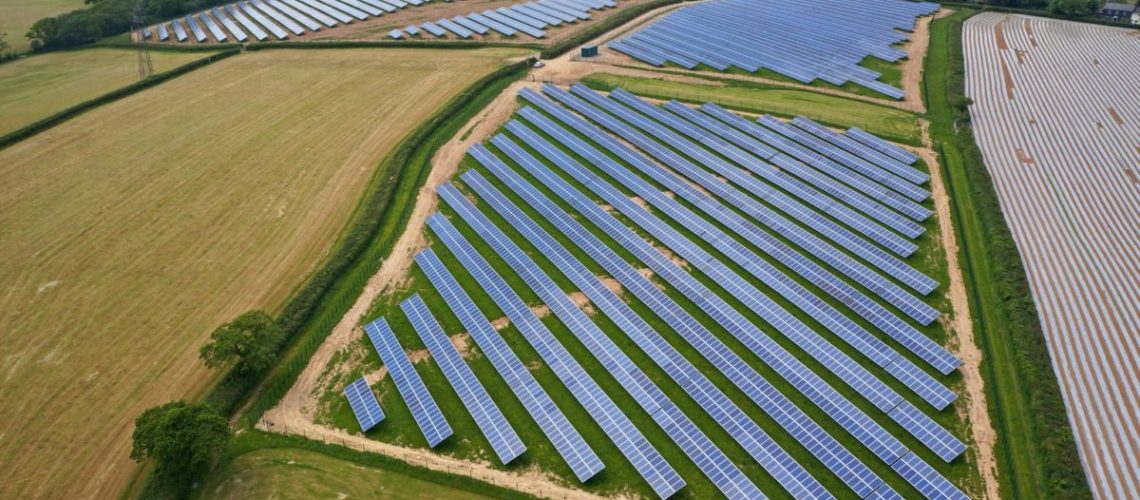The pv magazine tour of solar incentives takes us to Pennsylvania, where natural gas plays a significant role in energy exports, and solar takes a backseat. What needs to change?
May 25, 2022
Pennsylvania is the top exporter of electricity in the country, mostly generated by natural gas, as the commonwealth is second to Texas in its natural gas reserves, according to the US Energy Information Administration (EIA). Coal and nuclear power also factor into the mix, with Pennsylvania being second to Illinois in nuclear power generating capacity. Wind, hydropower, and biomass contribute to its renewable energy generation, with solar accounting for less than .5% of production.
Solar in Pennsylvania
Pennsylvania currently ranks 23rd in the country for solar installations, which is not very impressive as it ranks fifth in the country by population.
The commonwealth is currently receiving .41% of its electricity from solar; however, the growth projection of 1,904 MW over the next five years forecasts that Pennsylvania could achieve a ranking of 18th in the country for solar power generation. How will it get there? Scott Elias, director of state affairs, mid-Atlantic for the Solar Energy Industries Association (SEIA) said that increasing the carve out under the Alternative Energy Portfolio Standard (APS) standard will send a demand signal. The requirement set back in 2004 was .5%, which has been exceeded, and SEIA is hoping to push it to 2% or 2.5% by 2030. “We want to make sure that Pennsylvania is not less valuable for development than neighboring states,” said Elias.
Net metering
One positive note is that Pennsylvania has no cap on net metering. In 2007, the Pennsylvania Public Utilities Commission (PUC) expanded the net-metering rules, which approved the use of third-party ownership models. Furthermore, utilities must provide the same rates to net-metered customers as non-net metered, and they may not charge any fees that do not apply to other customers. Net-metered customers are credited for excess generation at the full kilowatt-hour rate, which includes generation, transmission and distribution changes. Meter aggregation is allowed on properties owned or leased by the customer, which can benefit commercial entities that may have multiple buildings with separate meters that fall under the same account. Virtual net meter aggregation is also allowed.
SRECs
The value of SRECs are a serious challenge to Pennsylvania’s solar market According to Elias, regardless of what type of project you have, you get the same SREC, so utility scale solar and distributed generation solar gets the same REC value. The concern is that if you don’t increase the solar goal from a half-percent, that market will be indefinitely oversupplied, which will shrink the value of the SREC. This scenario will change the economics of projects and hurt utility-scale investment in the commonwealth.
Pennsylvania does not have community solar regulation, nor does it have a specific program for low-income solar. As in all states, the federal investment tax credit of 26% is available for those who qualify.
Landmark projects
A solar installation currently under construction at the University of Pennsylvania will be the largest in the state to date. The University signed a 25-year power purchase agreement (PPA) in 2020 with Community Energy (acquired in December 2021 by AES). for a 220 MW solar project that will reduce the university’s carbon emissions by 45% from a 2009 baseline, bringing it closer to its goal of a 100% carbon neutral campus by 2042. The power purchased from the site will provide about 75% of the total electricity demand of the campus and the University’s Health System. The project broke ground in the fall of 2021 and is expected to begin delivery of electricity in 2023.
Another large solar project in Pennsylvania (shown in photo) was completed for the Pennsylvania State University in 2020. Located on approximately 500 acres of land, the 70 MWdc project, installed by Lightsource bp, provides 25% of the university electricity requirements. The installation moves the school further along the path toward its goal of reducing greenhouse emissions by 35% by 2020. The project was financed, built maintained and operated by Lightsouce bp, and power will be purchased by Penn State under a 25-year PPA. The project is a living laboratory for Penn State students who, through internships, gain real-world experience.
Clearing the hurdles
One area of growth expected in Pennsylvania may be community solar and utility scale development, although challenges to this growth—as well as growth in other states–is the pending Auxin trade case. Elias said he sees that as the number one near-term risk to the solar industry, and the result is that some utility scale projects are not being completed. In Pennsylvania specifically, the largest threat is the looming SREC price decrease, which may have material impact on deployment. In a state that is the biggest exporters of electricity, there is great opportunity for solar to play a greater role once the hurdles are overcome.
The pv magazine 50 states of solar incentives tour recently completed its visit to the six New England states with a look at Massachusetts, a wellspring of renewable energy innovation. Now in the mid–Atlantic region, the next stops on the tour will take us to New York and New Jersey.



